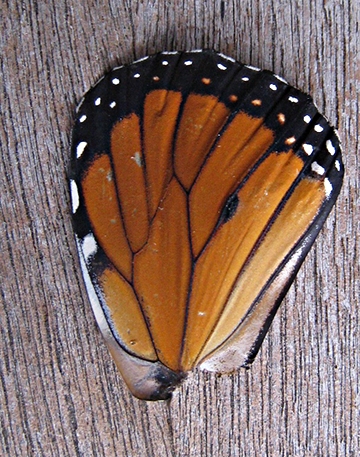
She hides 'em and we seek 'em.
We've spotted as many as seven adult praying mantids at a time in our little pollinator garden in Vacaville, Calif., but never once have we seen any of them laying eggs.
Until now.
The praying mantis lays an egg mass known as an ootheca or a protective egg sac. But always when you're nowhere around!
Not so this time.
Late Sunday afternoon, Sept. 23, Ms. Mantis (a Stagmomantis limbata, as identified by UC Davis student Lohit Garikipati, a Bohart Museum of Entomology associate who rears mantids) decided to grace our milkweed planter with a little present.
She climbed a redwood stake, looked around, saw me (oh, no problem, you're not a predator!), and crawled over to the other side. She positioned herself upside down, bulging abdomen intact, and proceeded to do her business. A frothy cream-colored substance began to emerge. (See my short YouTube video.) When darkness fell, she was still there.
When Monday dawned, she was still there, her ootheca finished and hardening. It probably contains several hundred eggs, but who's counting? However, scientists estimate that only one fifth will survive to adulthood. Many of the nymphs will be eaten by their hungry brothers and sisters. Bon appétit?
"Now that she's deposited the ootheca, will she expire soon?" we asked Garikipati.
"It's still early on in the season, so she may lay another two or three," he said.
She may indeed. Mama Mantis continues to hang out in the milkweed, while her ootheca, like a flag on a flag pole, "commemorates" the spot.
It should be a warning sign to incoming monarchs.
The next day, we found the clipped wing of a male monarch.
Attached Images:
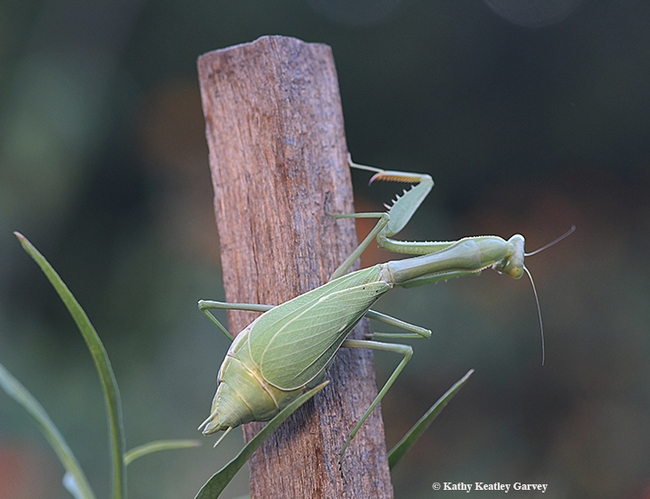
Ms. Mantis, on a redwood stake in a milkweed planter in Vacaville, Calif., is trying to find a place to lay her egg mass, an ootheca. This image was taken Sunday night, Sept. 23. (Photo by Kathy Keatley Garvey)
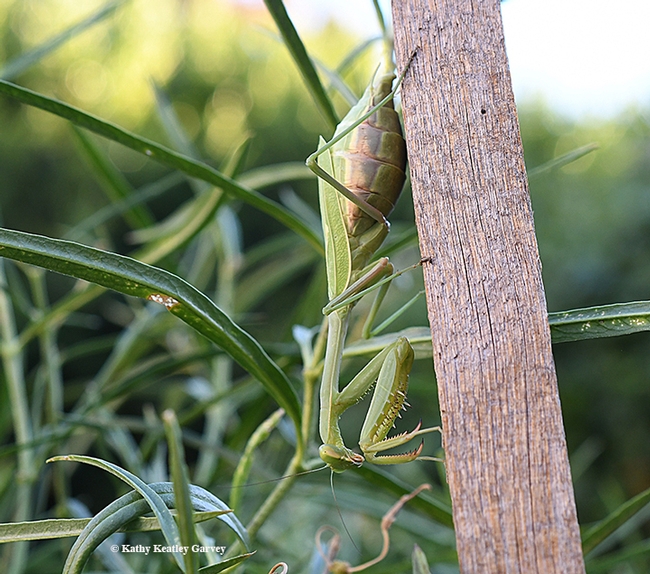
This looks like a good spot. This praying mantis, Stagmomantis limbata, is native to North America. (Photo by Kathy Keatley Garvey)
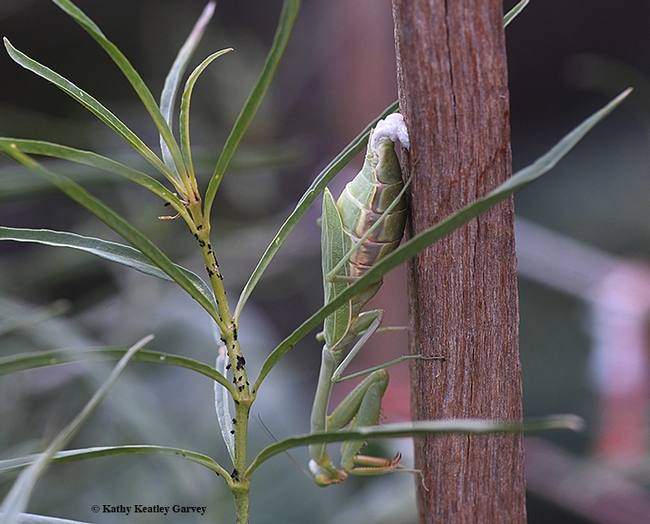
Ms. Mantis begins to work. Note the frothy cream-colored substance. (Photo by Kathy Keatley Garvey)
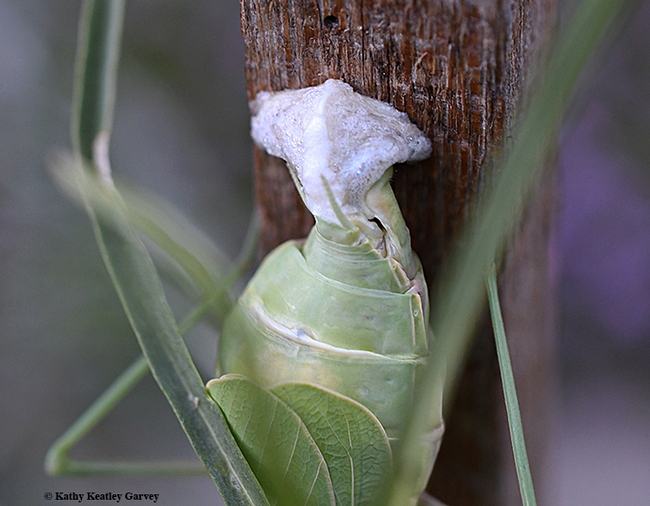
Close-up of the process. This Stagmomantis limbata did so in the open. (Photo by Kathy Keatley Garvey)
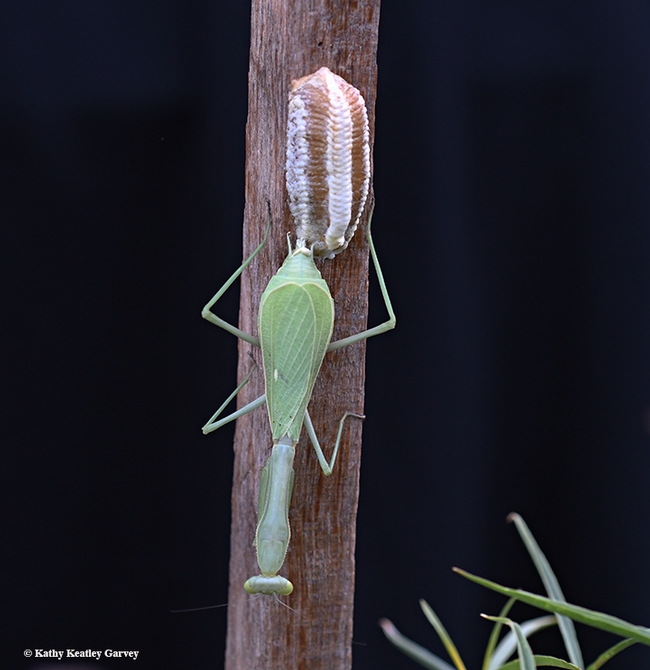
At dawn the next morning, we found her still on the stake with her hardening ootheca. (Photo by Kathy Keatley Garvey)